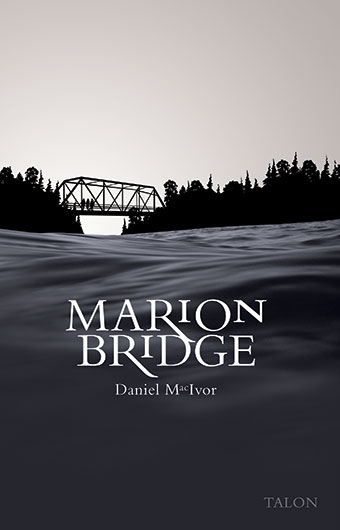Your cart is currently empty!
Important Shipping Notice: Due to the ongoing Canada Post strike, delivery times may be longer than usual. Where possible, we’ll use alternative shipping methods to help get your order to you sooner. We appreciate your patience and understanding as your order makes its way to you.
A note to US-based customers: All Lit Up is pausing print orders to the USA until further notice. Read more
Marion Bridge 2nd Edition
This fascinating version of Daniel MacIvor’s most successful play to date lets the reader in on a secret: it was never primarily written as a work for live theatrical performance, but as a vehicle for his development of a screenplay, also included in this new edition. In his surprisingly revealing introduction, MacIvor talks about the genesis of both the play and the movie; the lessons he learned about the differences between the two media; and their radically different stylistic, technical and practical demands on both their authors and their audiences.
A well-known practitioner of Canada’s theatre of the avant-garde, MacIvor had for years wanted to write a brilliant screenplay, but there was a problem: he didn’t know how. Most of his stark improvisational work for the live stage, centreed around minimalist sets and props, dramatic effects of light and sound, and usually his own improvisational solo performances, did not translate well into the medium of film. So in order to realize his ambition he decided to create Marion Bridge, a piece of “conventional theatre,” as a vehicle or transitionary playscript he thought he could use as a stylistic “bridge” from the live stage to the cinema. In the fact that Marion Bridge has become his most successful play to date lies one of the most important lessons MacIvor learned about the vast differences between the two media—between live performance that always relies on the audience to participate with the actor(s) in the active and collective creation of landscape and time within the space they share, and the cinematic experience wherein the creators and actors are absent, and the audience is estranged from the action by its passive consumption of a narrative of space and time always understood to take place in someone else’s world outside of the theatre.
“This moving drama, which tiptoes toward sentimentality without ever reaching it, is the most surprising play that [MacIvor’s] ever written. When was the last time you saw a drama about three distinct, complex women that had nothing to do with their relationships with men?”
—New York Times
“A compelling and strikingly original theatrical text … It might be MacIvor’s finest work yet.”
—Daily News
“An intimate, swiftly moving family drama … a sparkling crisp script, beautifully structured, with snappy, funny lines that dart in and out quickly like swallows, not interrupting the emotional drama of the story.”
—Halifax Chronicle-Herald
You must be logged in to submit a review.
Details
Dimensions:
192 Pages
8.5in * 216mm * 5.5in * 140mm * 0.5in13mm
269gr
9.5oz
Published:
October 01, 2006
City of Publication:
Vancouver
Country of Publication:
CA
Publisher:
ISBN:
9780889225527
9780889228078 – EPUB
Featured In:
Language:
eng
No author posts found.
